HP EliteDesk 705 G5 Desktop Mini review: Small in size, big in value
HP’s mini desktop is a perfect pint-sized PC for price-conscious purchasers
-
+
Compact design
-
+
Accessible internal layout
-
+
Highly affordable
-
-
Slightly underwhelming performance

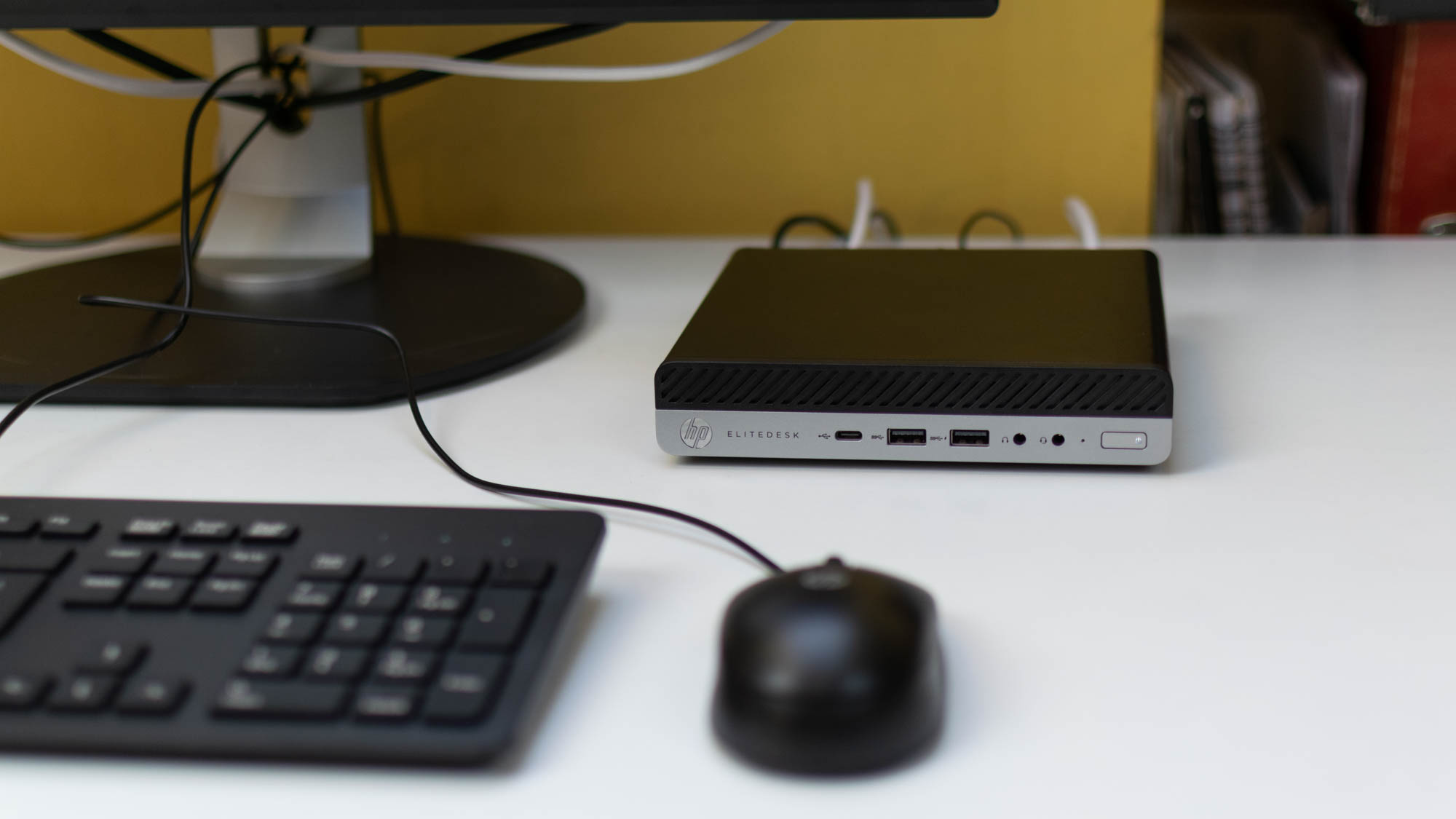
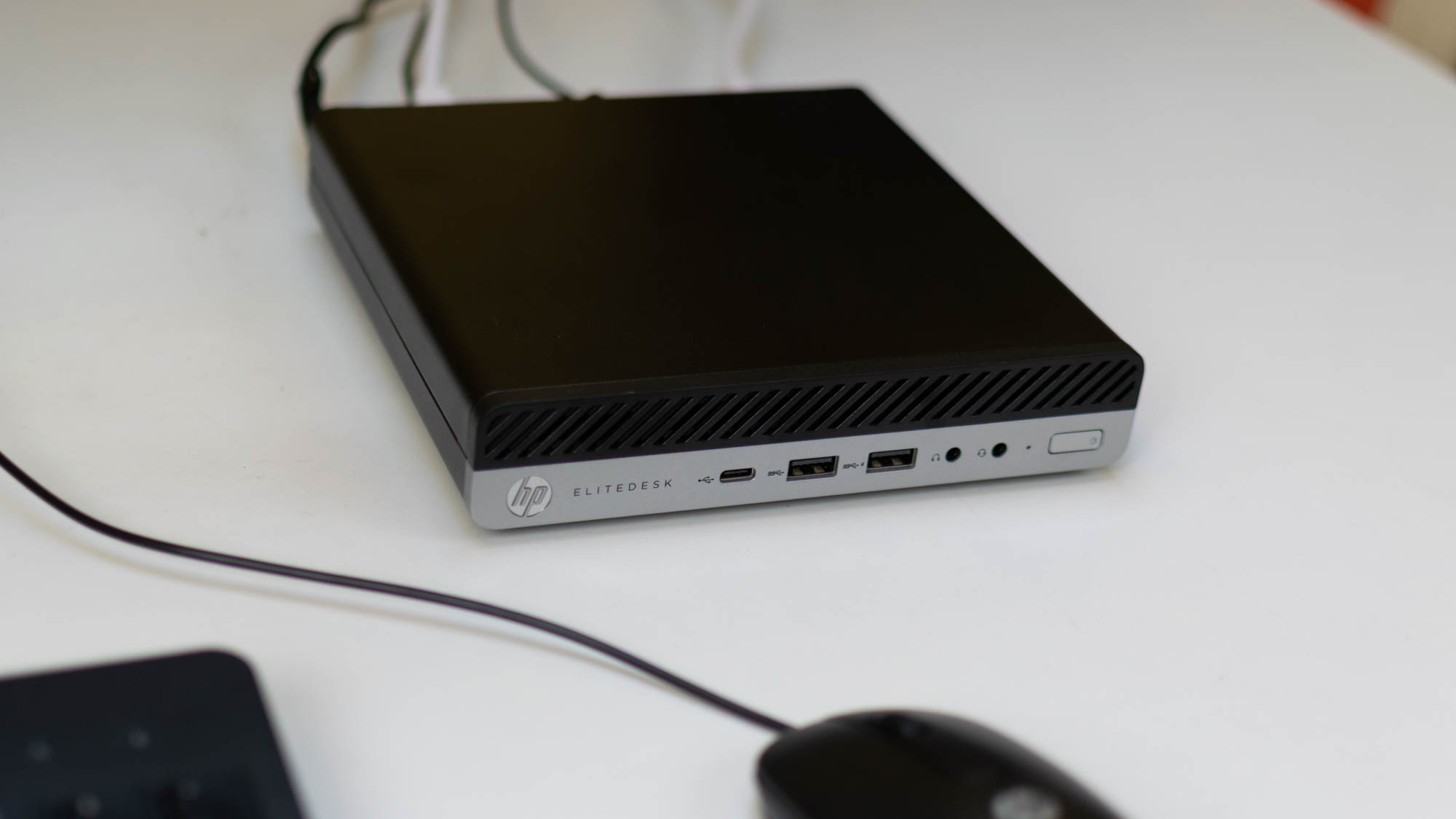
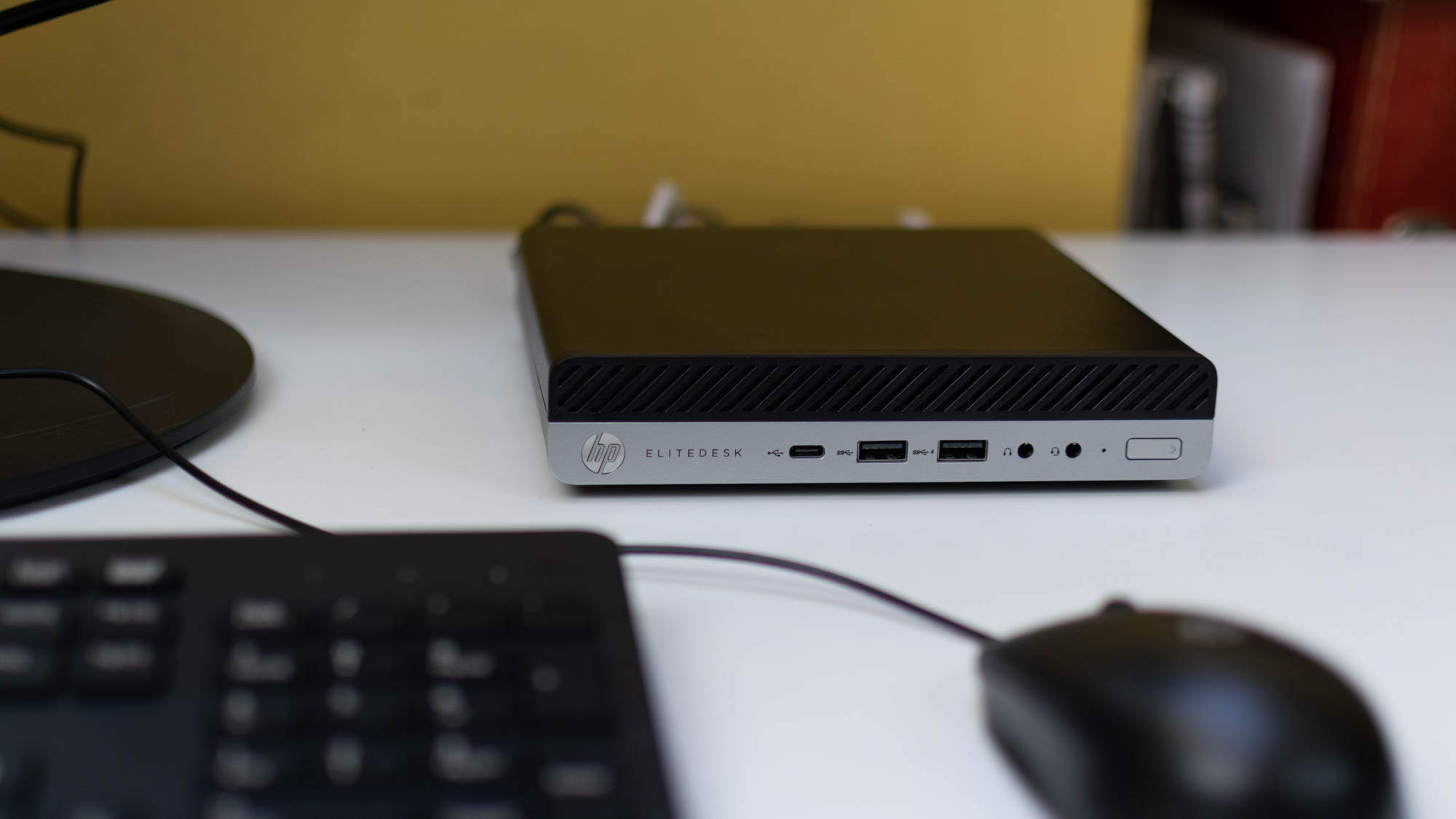
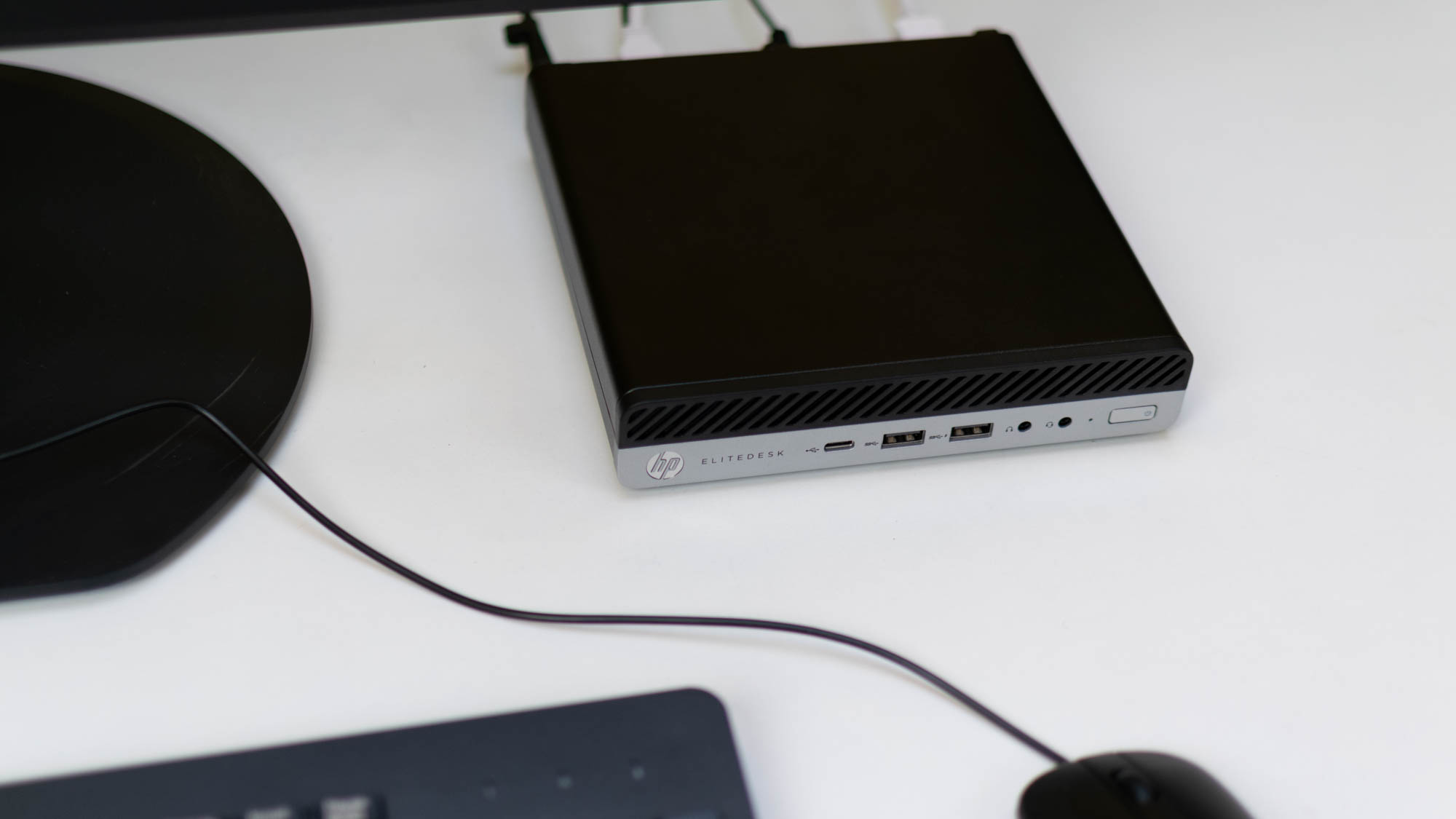
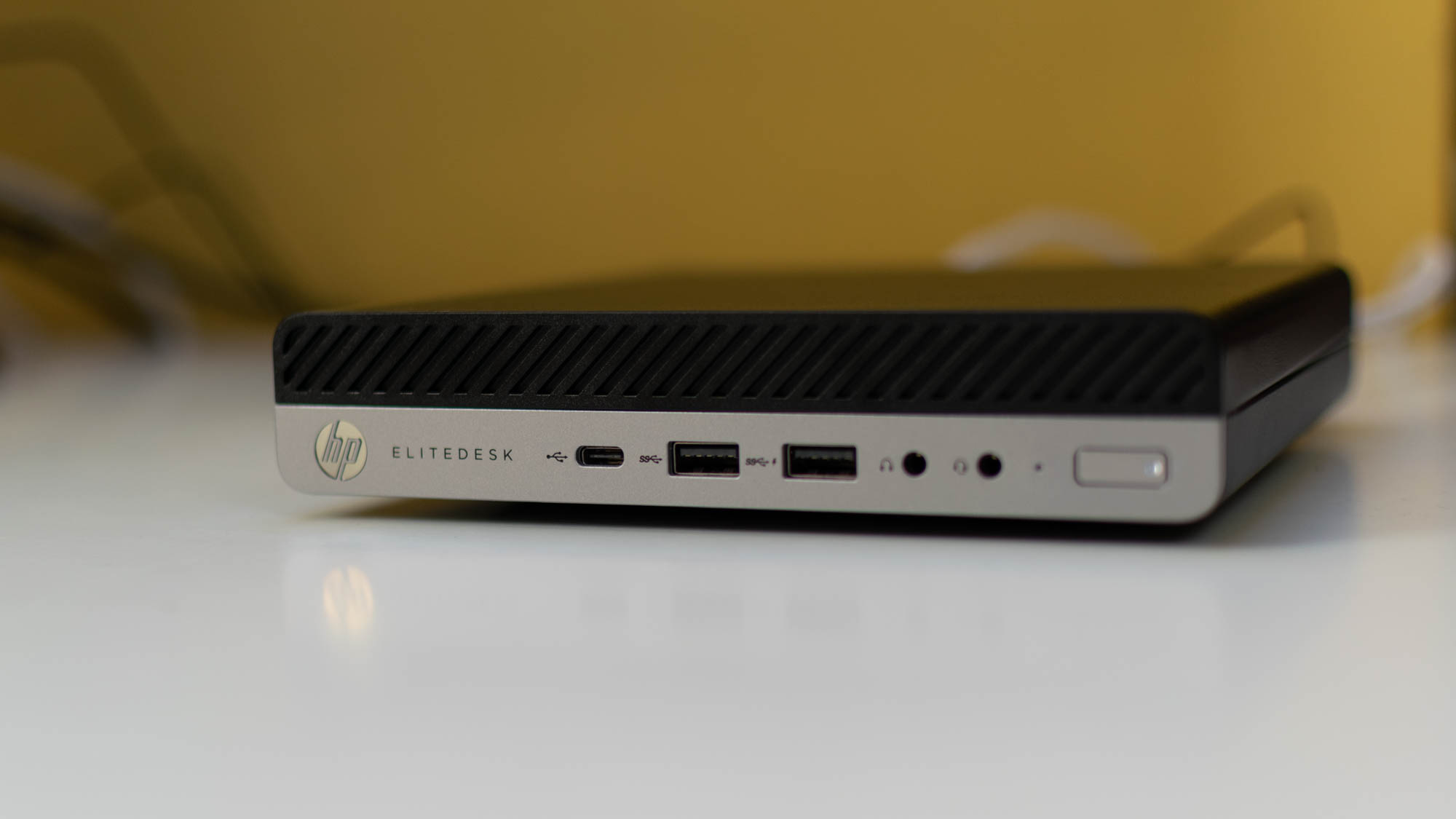
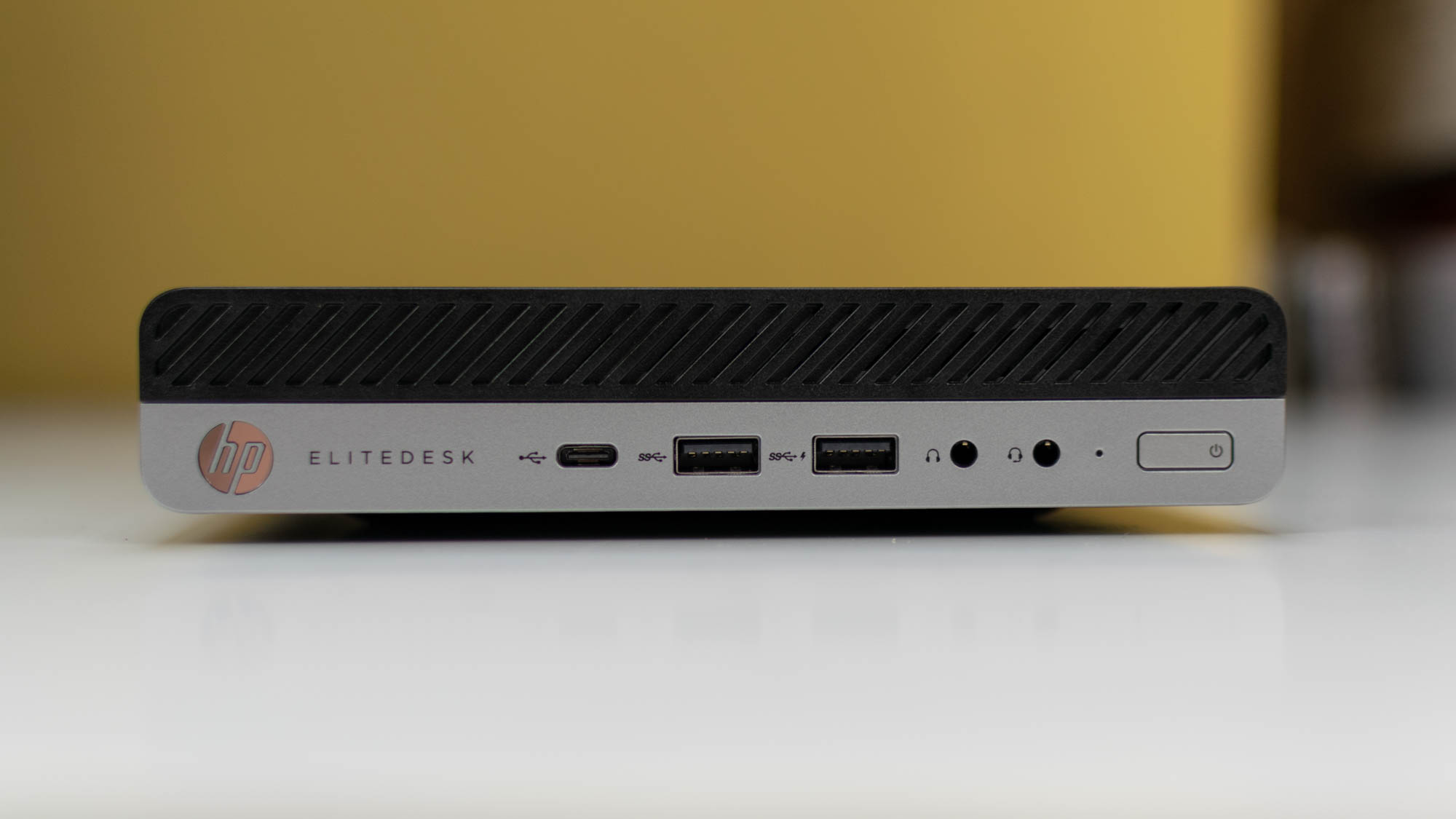
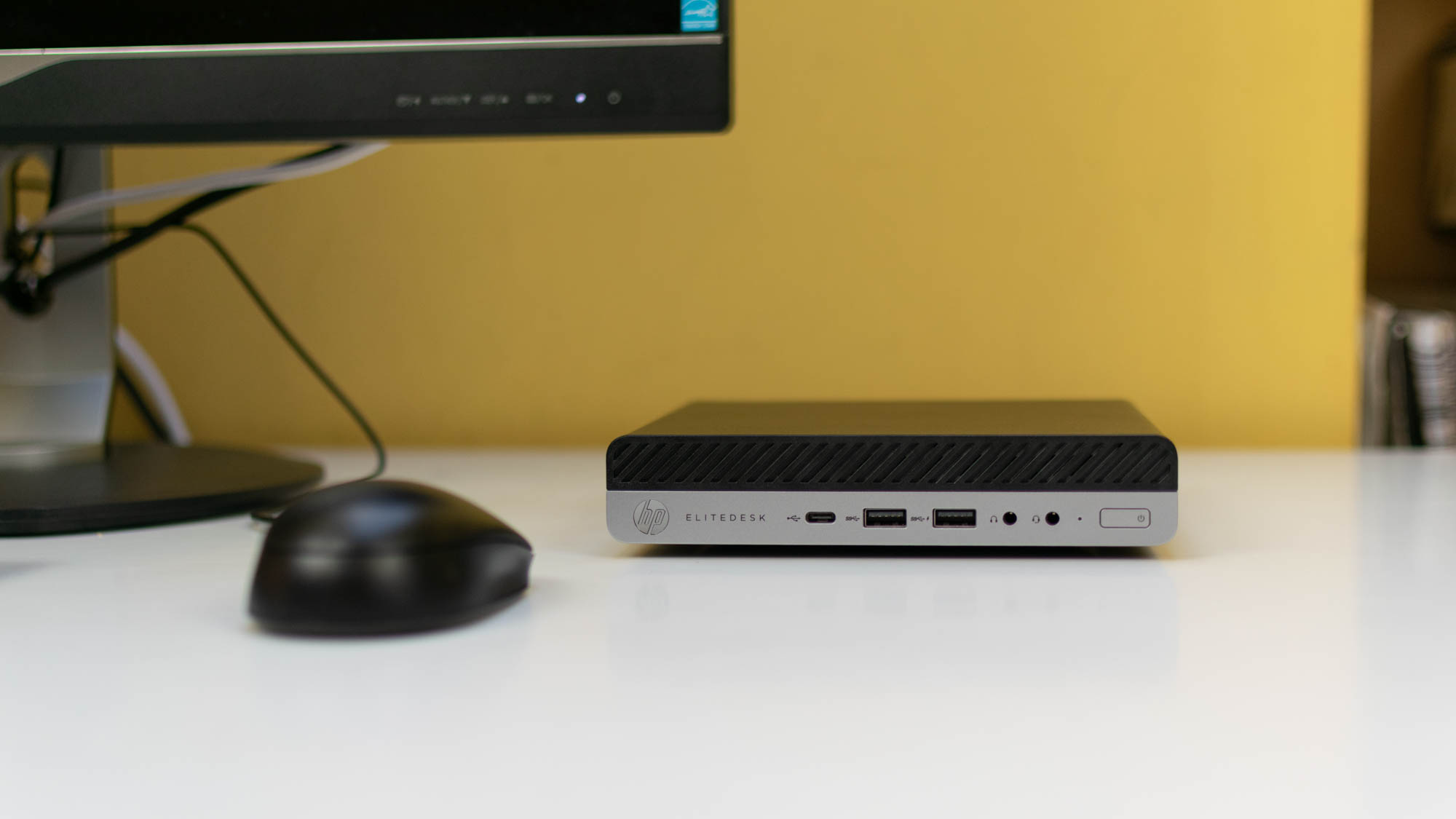
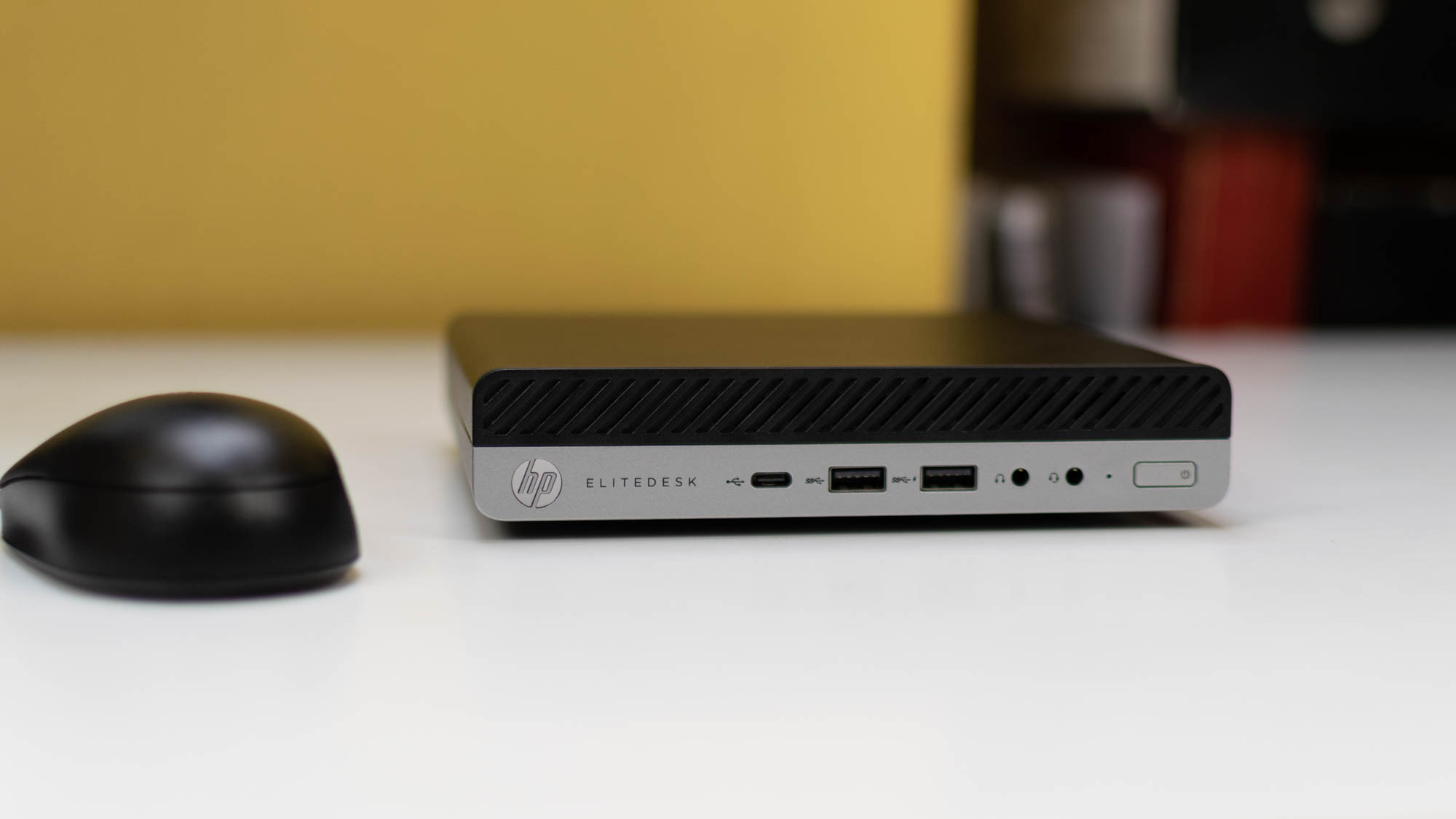
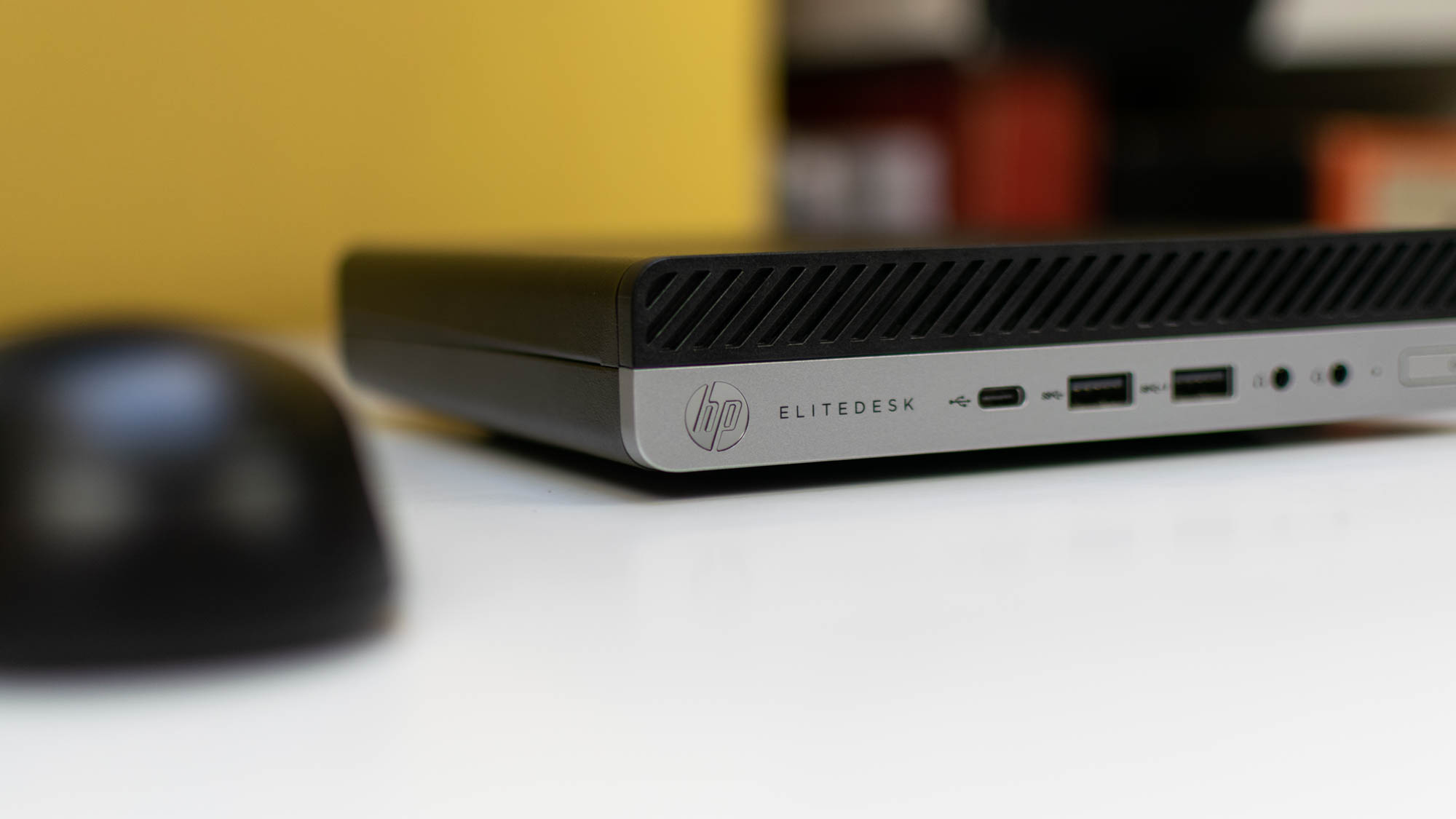
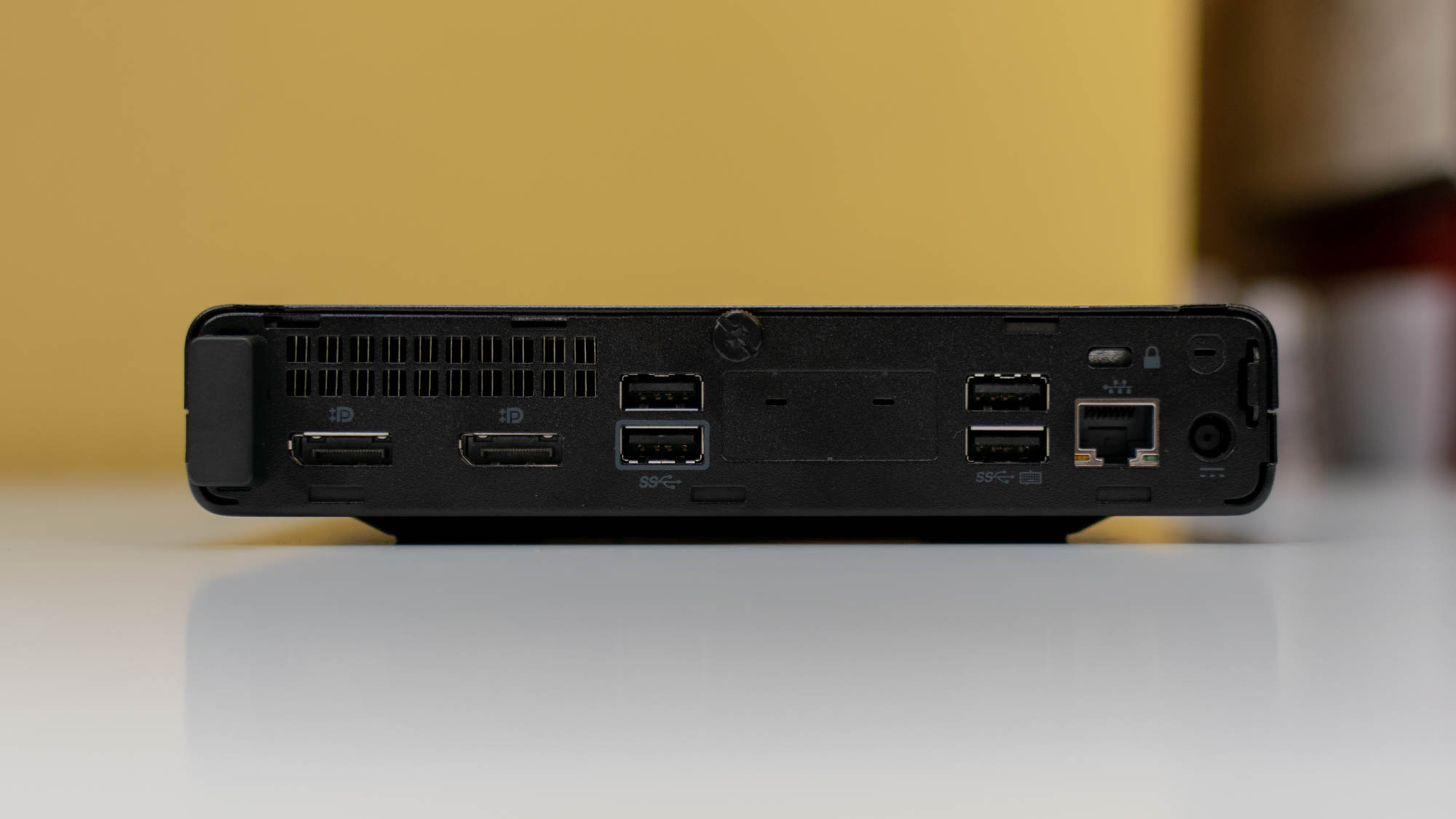
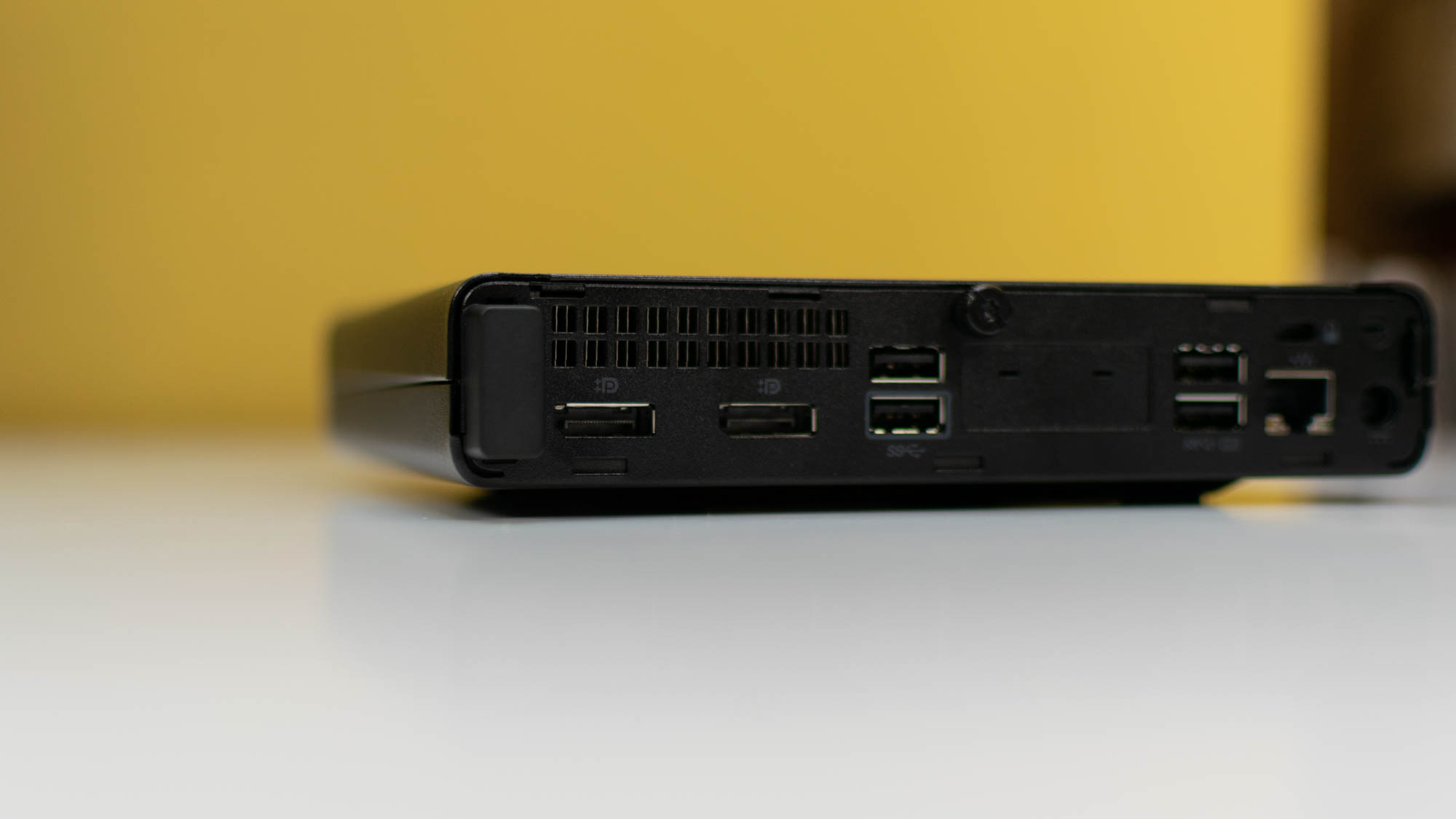
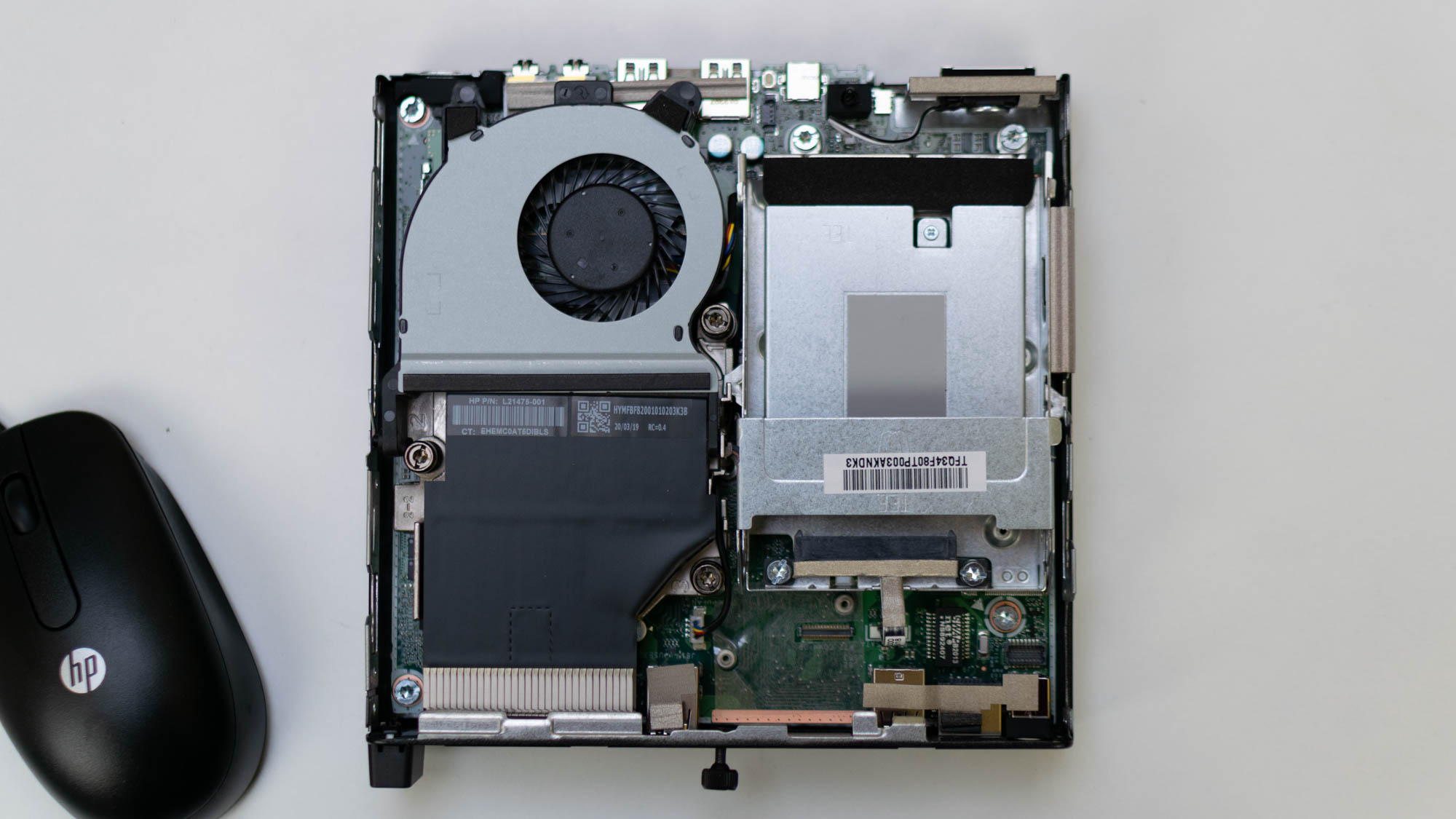
We’re big fans of small computers, and between the Raspberry Pi 400 and this diminutive desktop, we’ve been spoilt for choice recently. Unlike the Pi, however, the 5th-generation HP EliteDesk 705 is unabashedly enterprise-focused, setting its sights solely on large-scale business deployments with a number of IT-friendly features.
HP EliteDesk 705 G5 review: Design
The EliteDesk 705 is a small form-factor (SFF) PC, designed to provide all of the compute power the average employee needs without taking up too much space. It’s an unobtrusive little box, with a 1.05-litre chassis measuring 177 x 175mm, with a thickness of just 34mm. While that size is reasonably typical for a mini-PC of this type, a weight of 1.3kg puts it decidedly on the dainty end of the spectrum.
Like Dell‘s Optiplex 7060 Micro and the Lenovo ThinkCentre M910x Tiny, it features a range of deployment options. It can be mounted onto the back of any VESA-compatible monitor using the built-in mounting holes, or it can be stood upright in a tower mode – although due to the pleasantly rounded sides, you’ll have to use the included stand accessory, rather than simply turning it on its end.
Visually, it’s a rather understated bit of kit, following Lenovo and Dell’s examples and sticking to a neutral, businesslike design. Aside from the subtle silver accent that adorns most of HP’s enterprise devices, it’s all matte-black aluminium here, and it’s got the kind of discreet elegance you’d expect.
HP EliteDesk 705 G5 review: Internal layout
Happily, the interior design is just as sophisticated. All you need to do to open the case is remove a single thumbscrew and slide the top cover forward, revealing a neatly-laid out chassis with all of the key components easily accessible.

There’s a spare 2.5in SATA drive bay ready to support any storage expansion needs, which unscrews to reveal the M.2 slot used for primary storage. In our review unit, this was served by a 256GB Western Digital PC SN720 NVMe SSD, and with ASSD benchmark scores of 2,573MB/sec for sequential read speeds and 1,495MB/sec for sequential writes, it’s fast enough to feel suitably nippy without topping any charts.
That’s not all on the upgradeability front though; the fan module also flips up to reveal two SODIMM memory slots. Our review unit came with a single 8GB module of SK Hynix RAM, but depending on the configuration you opt for, one of these slots may be unfilled by default. However, they’re easy to get to should you wish to upgrade or replace the base memory allocation.
HP EliteDesk 705 G5 review: Specs and performance
All the models in this particular line are powered by AMD processors, a sight which is becoming increasingly commonplace. Our unit came with a quad-core Ryzen 5 Pro 3400GE chip, which includes integrated Radeon Vega 11 graphics, a 3.3GHz base clock speed and a 4GHz boost. This is one of AMD’s business-grade chips, and so comes with support for a range of enterprise-friendly management tools, including AMD’s web-based DASH endpoint management system, Microsoft Endpoint Manager, and security systems such as AMD Memory Guard and protection against cold boot attacks.
That’s a relatively meaty specification for an SFF PC, but, sadly, its benchmark scores didn’t totally deliver on that promise. An overall score of 101 is capable, to be sure, and competent enough to handle anything an average business user is going to want to throw at it – but it’s less impressive than the performance put in by other Ryzen chips we’ve seen lately. It’s also lagging behind some Intel-powered models; the Dell Optiplex, for example, managed an overall score of 117 with its lower-powered Intel Core i5-8500T, while Lenovo’s M910x Tiny virtually equalled the EliteDesk despite it using a now three-year-old 7th-gen Core i5 chip.
If we had to pick a culprit, we’d suggest that poor cooling is likely to blame; despite including both a heatsink and a fan, the CPU reached temperatures of up to 79 degrees while under load, which may indicate that there’s some throttling going on during more strenuous workloads.

Another clue is that the fan often goes into overdrive while doing anything particularly intensive, and it gets surprisingly loud when it’s running at full pelt. The persistent hairdryer-style whine is rather irritating, and we shudder to think what an office full of these things running at maximum capacity would sound like.
HP EliteDesk 705 G5 review: Ports and features
As you’d expect from a business device, the EliteDesk is well-equipped with a solid range of ports. The front panel includes two USB 3.1 ports (including one with power delivery), a USB 3.1 Type-C port, and two separate 3.5mm ports – one for headphones and one for mic-enabled headsets. Round the back, you have four more USB 3.1 ports, twin DisplayPort outputs and an Ethernet port.
HDMI support isn’t included as standard, but there’s space for an optional port which can be filled with outputs for HDMI, VGA, DisplayPort, or even a serial port. If you opt for a configuration with a discrete GPU, however, this port will be taken with the output for that, which also adds an option for USB-C output.
As with all of HP’s business machines, it comes pre-packaged with the vendor’s own security and management applications for things like BIOS protection, endpoint security, and data recovery. It also comes with a bundled keyboard and mouse – as with most bundled peripherals, the quality isn’t anything to write home about, but they’ll get the job done and we’ve nothing major to complain about.
One inclusion that is somewhat more unusual, however, is a built-in 2W mono speaker. You don’t always see this on PCs of this size, and there’s a good reason for that – the space constraints mean that they sound universally terrible. This example is particularly tinny and awful, and while the lack of bass and mid-range depth is no surprise, even the treble sounds slightly raspy and distorted. It’s handy as a last-resort fallback, but we’d hesitate to use this speaker even for video calls.

Aside from that, there’s support for the latest Wi-Fi 6 connection standard – offering a handy bit of future-proofing – as well as Bluetooth 5 and Windows 10 Pro pre-installed.
HP EliteDesk 705 G5 review: Verdict
The EliteDesk 705 isn’t going to be blowing anyone’s socks off with its hardware power or wowing anyone with its cutting edge design, but it doesn’t need to. HP has set out to create a solid, dependable business device that delivers a reasonable level of performance without eating too much unnecessary space or budget – and in that, it succeeds with some gusto.
An attractive sub-£500 price makes it a pleasant fit for value-conscious businesses right out of the gate, and those enterprise credentials only get more pronounced with its smart internal layout and ready upgradeability. It loses points for its noisy fan and slightly lacklustre performance but, overall, it’s a well-rounded workhorse that makes a perfect candidate for businesses looking to outfit home workers or front-of-house staff.
HP EliteDesk 705 G5 specifications
| Processor | AMD Ryzen 5 Pro 3400GE |
| RAM | 8GB SODIMM |
| Graphics adapter | AMD Radeon Vega 11 |
| Storage | 256GB Western Digital PC SN720 NVMe SSD |
| Expansion slots | 1x SODIMM slot, 1x 2.5in drive bay |
| Graphics outputs | 2x DisplayPort 1.2 |
| Other ports | 6x USB 3.1 gen 1, 1x USB Type-C, 1x 3.5mm headphone port, 1x 3.5mm headset port, 1x RJ-45 Ethernet port |
| Wi-Fi | Wi-Fi 6 |
| Bluetooth | Bluetooth 5.0 |
| Dimensions, mm (WDH) | 177 x 175 x 34 |
| Weight (kg) | 1.3kg |
| Operating system | Windows 10 Pro |
Get the ITPro daily newsletter
Sign up today and you will receive a free copy of our Future Focus 2025 report - the leading guidance on AI, cybersecurity and other IT challenges as per 700+ senior executives
Adam Shepherd has been a technology journalist since 2015, covering everything from cloud storage and security, to smartphones and servers. Over the course of his career, he’s seen the spread of 5G, the growing ubiquity of wireless devices, and the start of the connected revolution. He’s also been to more trade shows and technology conferences than he cares to count.
Adam is an avid follower of the latest hardware innovations, and he is never happier than when tinkering with complex network configurations, or exploring a new Linux distro. He was also previously a co-host on the ITPro Podcast, where he was often found ranting about his love of strange gadgets, his disdain for Windows Mobile, and everything in between.
You can find Adam tweeting about enterprise technology (or more often bad jokes) @AdamShepherUK.
-
 ‘Phishing kits are a force multiplier': Cheap cyber crime kits can be bought on the dark web for less than $25 – and experts warn it’s lowering the barrier of entry for amateur hackers
‘Phishing kits are a force multiplier': Cheap cyber crime kits can be bought on the dark web for less than $25 – and experts warn it’s lowering the barrier of entry for amateur hackersNews Research from NordVPN shows phishing kits are now widely available on the dark web and via messaging apps like Telegram, and are often selling for less than $25.
By Emma Woollacott Published
-
 Redis unveils new tools for developers working on AI applications
Redis unveils new tools for developers working on AI applicationsNews Redis has announced new tools aimed at making it easier for AI developers to build applications and optimize large language model (LLM) outputs.
By Ross Kelly Published
-
 Google layoffs continue with "hundreds" cut from Chrome, Android, and Pixel teams
Google layoffs continue with "hundreds" cut from Chrome, Android, and Pixel teamsNews The tech giant's efficiency drive enters a third year with devices teams the latest target
By Bobby Hellard Published